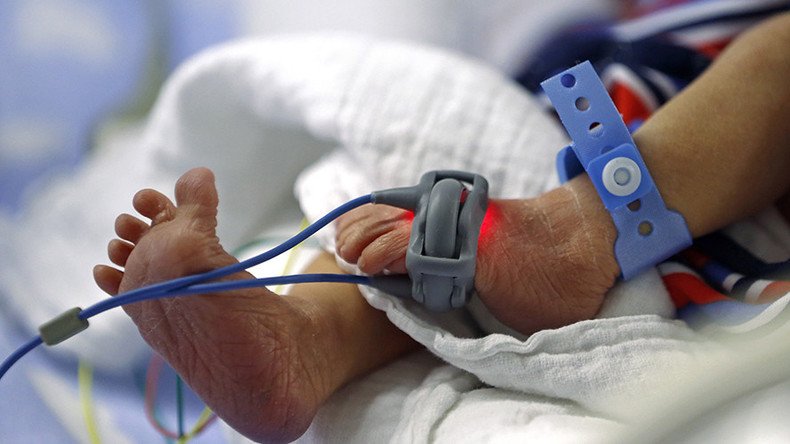US premature birth rates increase for 1st time in nearly a decade

Pregnancy is the US is becoming increasingly risky. For the first time in eight years, the rate of premature births has increased, from 9.57 percent to 9.63 percent. That number is even worse for racial minorities who face a higher risk of early labor.
Kazakhstan, Bolivia and Iraq all had lower rates of premature birth than the US, according to the March of Dimes, an organization working to end premature birth. It has given the US a “C” in its latest Premature Birth Report Card after the overall rate of preterm births crept up in 2015.
Premature, or preterm, birth is defined as birth before 37 weeks of pregnancy. Along with the potential health risks to the child, there are also financial burdens following a premature birth. While some infants can be born preterm with few health problems, others experience severe issues such as intellectual delays, cerebral palsy and even death, according to the World Health Organisation.
US maternal mortality rate worse than Libya, Palestine - report https://t.co/22SshgMlnwpic.twitter.com/WnOvqS2A9o
— RT America (@RT_America) October 10, 2016
Even more troubling is that March of Dimes found that the problem disproportionately affects minority women. According to their study, black women have a 48 percent higher rate of preterm births than any other race.
The problem of preterm births exists in varying degrees across the country. While states like New Hampshire, Oregon, Vermont and Washington all meet the organization’s target rate of 8.1 percent, other states fall sharply on the opposite side of the spectrum.
Alabama, Louisiana and Mississippi all received F’s on their individual report cards, with all three states having rates higher than 11.5 percent. The rate of premature births could possibly be a confluence of multiple factors, such that all three states have poverty rates exceeding 17 percent, according to Poverty USA.
The March of Dimes has set a goal for the US to reach a national rate of 8.1 percent preterm births by 2020, but Edward McCabe, the chief medical officer of the organization, feels that the issue needs more attention before it can get fixed.
"We feel that this is a recognition that we need to work harder as a nation, that we need to focus," he told NPR.
Maternal mortality rate in Texas highest in industrialized world – studyhttps://t.co/mUvJkhi9q6pic.twitter.com/meVVH6gPeY
— RT America (@RT_America) September 17, 2016
However, the financial implications of preterm births could inspire more preventive action from lawmakers. Premature births have cost the US an annual $26 billion in avoidable medical and societal costs, according to a 2005 report from the National Academy of Medicine.
This is further bad news for the state of motherhood in the US. Last month, the US was found to have a maternal mortality rate higher than Libya and Palestine. The problem was particularly compounded in Texas, where the mortality rates were the highest in the industrialized world, where the rates were also increasing so much that researchers found it strange "in the absence of war, natural disaster, or severe economic upheaval."
In May 2015, the US was named the worst developed country in the world for a mother, ranking 61st globally in maternal health, according to the State of the World’s Mothers.












